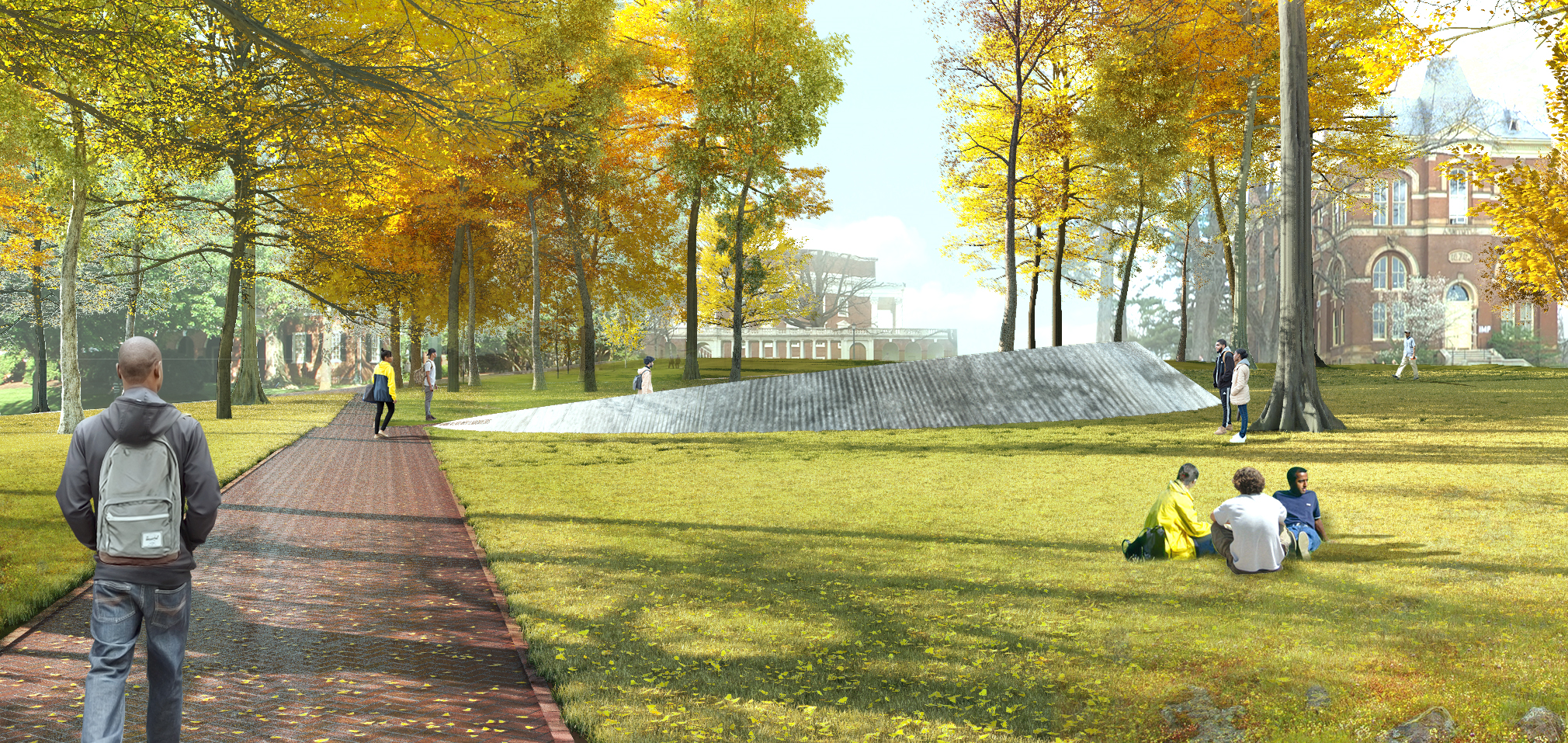How Eric Höweler and Meejin Yoon prevailed in their interview for the University of Virginia’s Memorial to Enslaved Labor came down to three key responses:
They did their homework. They wanted to listen before they designed. And they assembled an accomplished set of players.
“We wowed them by doing research and being thoughtful and prepared,” Höweler says. “We had a great interview and a great team, with Mabel Wilson,”
Wilson is associate professor of architecture at Columbia’s graduate school of architecture, planning and preservation. There, she directs a program for advanced architectural research.
She made all the difference. “Mabel said the memorial was about families and the pain of the past and also the joy of life,” he says. “They were so focused on the guilt, trauma and violence of slavery, but she said it could be sober and joyful.”
The mood in the room changed instantly, for the better.
The University’s initial assignment for Höweler + Yoon was not to design anything, but to describe their process and how they would approach the memorial. “We said that we had to listen first – to churches, high schools, janitors and the people who take care of the Grounds, and to hear about the hopes and desires of the community,” he says.
The team was presenting to a group of academics and administrators ready to confront their University’s past. “For U.Va., Jefferson was a hero founder, but his legacy is still ambiguous,” he says. “And this memorial is meant to set the record straight.”
The competition was stiff – including local landscape architects from Nelson Byrd Woltz, as well as Walter Hood, professor and former chair of landscape architecture at the University of California, Berkeley.
Still, the Boston-based contemporary firm prevailed, at a school that some see as tradition-bound. “I think they were surprised that they chose us – I’m not sure they were ready for someone so modern,” he says. “But they support the project, and so does their president – and it will affect the reputation of the University of Virginia.”
That’s because when it opens on April 11, two and a half years after the events of August 2017 in Charlottesville, U.Va. will take an enormous, positive step forward.
Next: The design solution.
For more, go here.
[slideshow id=2068]

